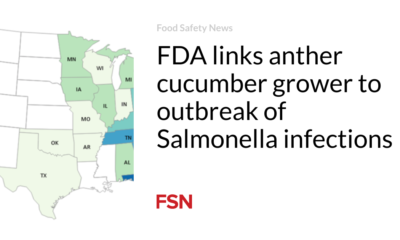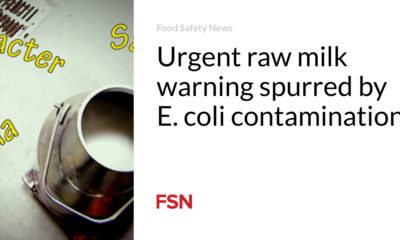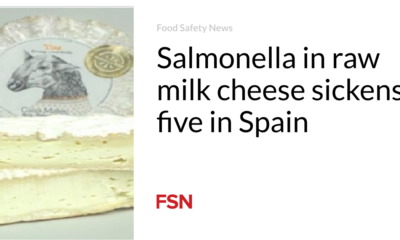Food
The FDA completes a new round of testing and finds that pasteurized milk products are safe

The Food and Drug Administration has completed a second round of peer-reviewed testing, finding that milk and other dairy products that undergo pasteurization are safe for human consumption because the H5N1 avian virus is killed.
Although pasteurization is effective in protecting milk and milk products from the virus, raw milk remains a risk to consumers.
The FDA released the results of the second sample survey of retail dairy products and provided information about the first survey.
The second sample survey was coordinated with USDA for the analyses. It tested 167 dairy products collected from retail locations for highly pathogenic bird flu A (H5N1).
The samples included pasteurized liquid milk and products made from pasteurized milk, such as pasteurized cheeses, cream cheese, butter and ice cream. It also contained old raw milk cheese, a product made from milk that had not been pasteurized. No viable H5N1 virus was detected in the products.
On August 13, the FDA announced the results of the agency’s second study of retail dairy products. The samples were processed and analyzed by a USDA-Agricultural Research Services (ARS) laboratory from June 18 to July 31. All 167 samples were found to be negative for the viable H5N1 virus.
The FDA’s second sample survey tested dairy products collected at retail locations, including aged raw milk cheese, pasteurized liquid milk and products made from pasteurized milk, such as pasteurized cheeses, cream cheese, butter and ice cream.
The samples, collected by a third party, were aseptically repackaged to remove identifying production traces and then sent to USDA-ARS for extraction and analysis. The USDA reported the results to the FDA. No viable virus was detected in the samples.
These results reinforce previous assessments that commercial pasteurization inactivates the H5N1 virus. The USDA ARS and the FDA submit the study results for publication in a peer-reviewed journal.
Since 2022, the United Stttes has reported fourteen human cases of bird flu in three states. However, no one is blamed for consuming milk or dairy products. Four of these were related to exposure to dairy cows, which has occurred since March. Ten had exposure to poultry reported between April 28, 2022 and July 25, 2024.
Since the current round of bird flu began in early 2022, more than 100 million birds from commercial flocks have been lost in 48 states. Since March, the number of infected dairy herds has reached 190 in 13 states, with 63 infected herds in Colorado.
The CDC’s flu surveillance systems do not report indicators of unusual flu activity in humans, including avian flu A(H5). More poultry outbreaks are expected this fall as migratory wild birds begin to migrate.
(Click here to sign up for a free subscription to Food Safety News.)











